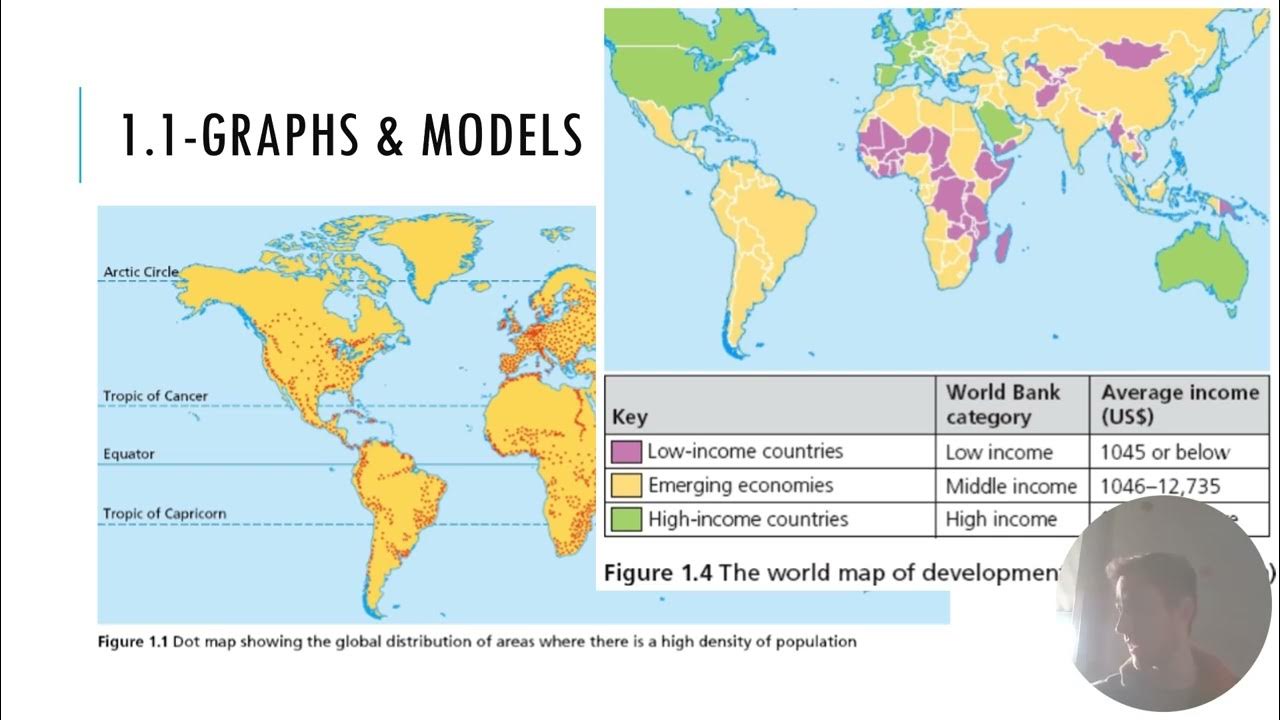Demographic transition model| Human populations| AP Environmental science| Khan Academy
Summary
TLDRThe video explores the Demographic Transition Model, which tracks the shifts in population dynamics as countries industrialize. It covers four stages: pre-industrial, transitional, industrial, and post-industrial. In pre-industrial societies, both birth and death rates are high. As countries industrialize, death rates decrease, and birth rates follow, leading to population growth. In the post-industrial phase, birth rates may fall below death rates, causing population decline. The video highlights the social and economic challenges of each stage, particularly in aging populations, and discusses how countries can manage these transitions effectively.
Takeaways
- 😀 Demographers study population makeup and transitions over time, particularly how countries shift from pre-industrial to post-industrial phases.
- 😀 The Demographic Transition Model (DTM) divides population changes into four stages based on birth rates, death rates, and industrialization.
- 😀 In the pre-industrial phase, both birth rates and death rates are high, resulting in a stable but low population.
- 😀 High death rates in pre-industrial societies are due to poor healthcare, disease, and malnutrition.
- 😀 High birth rates in pre-industrial societies are influenced by cultural norms, lack of family planning, and limited female education.
- 😀 As countries industrialize, death rates decline due to improved healthcare and nutrition, leading to a population increase.
- 😀 Birth rates also begin to decline during industrialization, but more gradually than death rates, causing a population boom.
- 😀 In the industrial phase, birth rates continue to fall as women enter the workforce and family planning becomes more common.
- 😀 In the post-industrial phase, birth rates can fall below death rates, leading to a stable or even declining population.
- 😀 Countries in the post-industrial phase, like Japan, face challenges of an aging population and economic strain due to lower birth rates and longer life expectancies.
Q & A
What is the demographic transition model?
-The demographic transition model is a framework used by demographers to study how a country's population changes over time, specifically as it moves from a pre-industrial to a post-industrial society. It tracks changes in birth rates, death rates, and total population across four stages.
What is the significance of the horizontal and vertical axes in the demographic transition model graph?
-The horizontal axis represents time, showing the progression of a country through different stages. The vertical axis represents rates per thousand people, used to measure birth rates, death rates, and population. The total population is represented by a separate indicator, not as a rate.
Why are both birth rates and death rates high in the pre-industrial phase?
-In the pre-industrial phase, high birth rates and death rates are due to limited access to healthcare, high child mortality, disease, and malnutrition. Additionally, there are fewer educational opportunities and family planning options, particularly for women.
What changes occur in the transitional stage of the demographic transition model?
-In the transitional stage, death rates begin to fall due to improvements in healthcare, nutrition, and industrialization. Birth rates also start to decline, although more slowly. This results in a population growth as the gap between birth and death rates widens.
How does industrialization impact birth rates and death rates?
-Industrialization leads to better healthcare and nutrition, reducing death rates. At the same time, societal changes such as increased female workforce participation, better education, and access to family planning start to reduce birth rates.
What are the characteristics of the industrial stage in the demographic transition model?
-In the industrial stage, birth rates continue to decline, approaching the death rate. More women enter the workforce, family planning becomes more common, and there is increased awareness that smaller families tend to be wealthier and more prosperous. Population growth slows as birth and death rates converge.
What challenges does a post-industrial society face according to the demographic transition model?
-In post-industrial societies, birth rates may fall below death rates, leading to a population decline. This results in an aging population with fewer young people to support the elderly. Economic challenges include slower economic growth and the difficulty of providing healthcare and social services for an aging population.
What is the significance of Japan's population trend in the context of the demographic transition model?
-Japan is an example of a country that has entered the post-industrial phase, with a declining population due to low birth rates. This presents challenges related to an aging population, such as the strain on healthcare, pensions, and economic growth, as there are fewer young people to support the elderly.
Why might a country get stuck in the transitional stage of the demographic transition model?
-A country may get stuck in the transitional stage if it experiences delayed economic development, meaning it cannot fully industrialize. This can prevent the country from moving to the next stage, where birth rates and death rates converge, and may result in prolonged population growth without significant socio-economic improvement.
How does the demographic transition model inform policy decisions for governments?
-The demographic transition model provides valuable insights for policymakers by offering a framework to understand population dynamics at different stages of development. It helps governments plan for healthcare, education, and economic challenges, particularly when addressing issues such as aging populations or managing industrialization.
Outlines

This section is available to paid users only. Please upgrade to access this part.
Upgrade NowMindmap

This section is available to paid users only. Please upgrade to access this part.
Upgrade NowKeywords

This section is available to paid users only. Please upgrade to access this part.
Upgrade NowHighlights

This section is available to paid users only. Please upgrade to access this part.
Upgrade NowTranscripts

This section is available to paid users only. Please upgrade to access this part.
Upgrade NowBrowse More Related Video
5.0 / 5 (0 votes)





